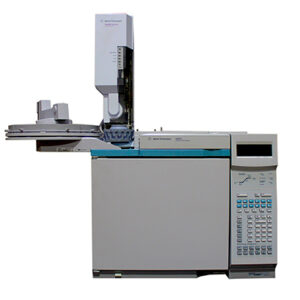Gas chromatography
Gas Chromatography – Flame Ionization Detector (GC-FID)
EGP0.00 / runGC is defined as a physical technique for the separation of volatile and semi-volatile compounds by passing a mobile carrier gas over a stationary phase. The Separation occurs as analytes partition in and out of the stationary phase while being carried through the column by the moving mobile phase. The major factor in separation is due to analytes having different affinities for the stationary phase.
FID is considered as almost universal for organic compounds this is effectively the detector par excellence, of GC. The gas flow issuing from the column passes through the flame of a small burner fed by a mixture of hydrogen and air. The detector destroys the organic compound present whose combustion results in the release of ions and charged particles responsible for the passage of a very weak current between two electrodes (pd of 100 to 300 V).
Residual solvents analysis
EGP0.00 / runWhat are “residual solvents”?
Residual solvents in pharmaceuticals are defined as organic volatile chemicals that are used or produced in the manufacture of drug substances or excipients, or in the preparation of drug products. Because residual solvents do not provide therapeutic benefit and can be harmful or toxic in some cases, they should be removed to the best extent possible, to meet ingredient and product specifications.
Types of residual solvents?
Residual solvents are classified according to USP based on risk assessment into 3 classes:
Class 1: Solvents to be avoided
- Strongly suspected human carcinogens or Environmental hazards.
- Examples: Benzene, Dichloroethene, Carbon tetrachloride.
Class 2: Solvents to be limited
- Nongenotoxic animal carcinogens or possible causative agents of other irreversible toxicity, such as neurotoxicity or teratogenicity.
- Examples: Acetonitrile, Chloroform, Methanol, Pyridine, Tetrahydrofuran, Toluene
Class 3: Solvents with low toxic potential
- Solvents have permitted daily exposure (PDE)s of 50 mg or more per day
- Acetic acid, Ethanol, Ethyl acetate, Ethyl ether, Formic acid
Procedure of measurement
- Using GC-FID method for residual solvent analysis

